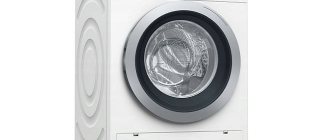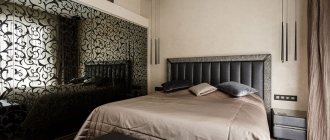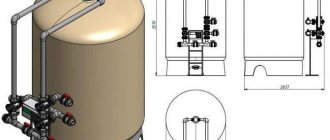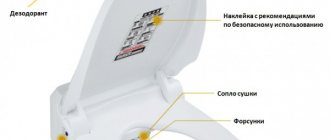Modern fashionistas associate the concept of vintage with exclusivity, originality and high quality. The main goal of this direction is to revive stylish clothing models of past years. In practice, rare vintage clothing allows the fair sex to meet the trends of the fashion era, conveying its spirit, style and mood. Not every old thing is considered vintage; in this definition, fashion designers include the best designer clothing samples made in the 20-60s of the 20th century.
Characteristic features of the style
Rare items that are fashionable today characterize the main style trends of a certain era. In general, the vintage style in clothing is divided into several varieties:
- neo-vintage - worn, discolored, artificially aged clothing models that may not belong to the vintage era;
- vintage - exclusive originals (originals) of famous fashion designers or trading houses, created no later than the 80s;
- vintage styling - new samples of things, altered to a certain style of past decades. In this case, both complete copying of a fashion sample (replication) and emphasizing individual nuances of the vintage style - prints on fabric, cut, finishing, silhouette - can be used;
- combination - when making new clothing samples, elements of vintage finishing are used - braid, buttons, bows, lace, fringe;
- sewing from rare (vintage) fabric – thanks to cuts of vintage material, you can sew clothing models of both modern design and those of yesteryear.
Vintage style in clothing is directly related to the age of things - blouses, tunics, hats, dresses are the personification of the style of bygone eras.
| 20s |
|
| 30s |
|
| 40s |
|
| 50s |
|
| 60s | Girls' wardrobes are changing dramatically - short haircuts, miniskirts, boots, shoes, and platform/heeled ankle boots are becoming popular. |
According to fashion critics, only samples produced before the 60s of the last century can be classified as vintage style. Clothing items made later are classified as retro.
General recommendations
Everything is not as complicated as it might seem at first glance. It is enough to follow the following principles:
- Avoid ostentatious luxury. Simplicity combined with elegance is what you need. Leave curls for baroque and shabby chic - they are out of place here. Convex and concave lines, voluminous armchairs or sofas are suitable here.
- Symmetry - try to arrange furniture so that one element smoothly transitions into another. Of course, it is unrealistic to completely achieve such an effect in the kitchen, but the general direction is clear.
- Avoid artificial materials.
- Give preference to natural, light tones with a matte texture.
- Try to find “antique” furniture and decor, but do not forget about certain “age” limits.
- Pay attention to textiles. Heavy fabrics with fringes, tassels, painting, and ornaments are appropriate here.
- Maintain moderation - if in the boho-chic style an abundance of accessories is acceptable, then you need to find a balance.
- Try to find things with history - those that evoke associations specifically for you.
Everything seems to be clear. Let's take a closer look, point by point.
Decoration Materials
The choice of finishing materials requires compliance with certain rules. And the first of them is compliance with the spirit of the times.
You will have to abandon the usual plastic panels, plasterboard structures, suspended ceilings and linoleum.
Advice: Look at what was used in the era of your choice - then it will become clear what you can use.
For walls, wallpaper is most often used - paper or fabric. As an option - wooden panels. A good solution for a backsplash is small ceramic tiles in discreet colors.
Make the floor wooden or parquet - but no laminate, only natural wood.
The easiest thing to do with the ceiling is to paint or plaster it. All this will help create a truly beautiful design.
Life hack: There is no need to try to make a perfectly smooth ceiling surface - small cracks and roughness are even welcome.
If you are renovating a kitchen studio, make sure that the design of all zones is consistent: an LCD TV in the living room is forgivable, but an abundance of high-tech elements is unlikely.
Accessories and decorations
It is believed that the right accessories can convey true vintage chic. Women choosing clothes in vintage style should also pay attention to such details as:
- vintage shoes - elegant shoes with an oval toe with a stable heel, loafers (for a sporty look).
- elegant and flirty vintage hats (for walking);
- long gloves;
- massive vintage horn-rimmed glasses.
Bags deserve special attention - they are an integral part of any stylish vintage look:
- small Chanel leather clutches with a gold chain and a signature label (for a festive or evening dinner);
- a reticule is a small accessory on a long belt that can be decorated with rhinestones or embroidery (combined with sophisticated dresses);
- a strict briefcase for military style;
- travel bag - a trapezoidal hard bag made of leather (artificially aged).
Jewelry is the finishing touch of a unified vintage style. These are exquisite earrings, necklaces, bracelets, rings made of semi-precious stones or high-quality jewelry. Vintage jewelry is selected and worn taking into account the time of day and type of event (evening and daytime looks).
Also important in a vintage look is a spectacular hairstyle, well-applied makeup and, of course, mood.
Basic wardrobe in vintage style
To create a vintage-style look, modern stylists suggest paying attention to the following basic items of clothing:
Women's wardrobe:
- casual dresses, just below the knee length. Large polka dots, contrasting stripes, and floral patterns are welcome.
- Evening dresses can be distinguished by an abundance of decor, or, conversely, focus on the quality and sophistication of the fabric from which they are made.
- Jeans. High-waisted, flared from the hip or knee.
- Blouses with a closed collar, often complemented by a bow.
Men's clothing:
- single-breasted jacket. It practically does not change over time, the only difference is in the details and the number of buttons.
- Suit pants. Depending on the decade chosen, they will be slightly narrower or slightly wider than the classic version.
- Jeans. The traditional cut remains unchanged, and “bananas”, which came from the 80s with virtually no modifications, can be considered as derivatives.
- Jean jacket. A constant attribute of both the 70s and 80s, as well as modern street style.











